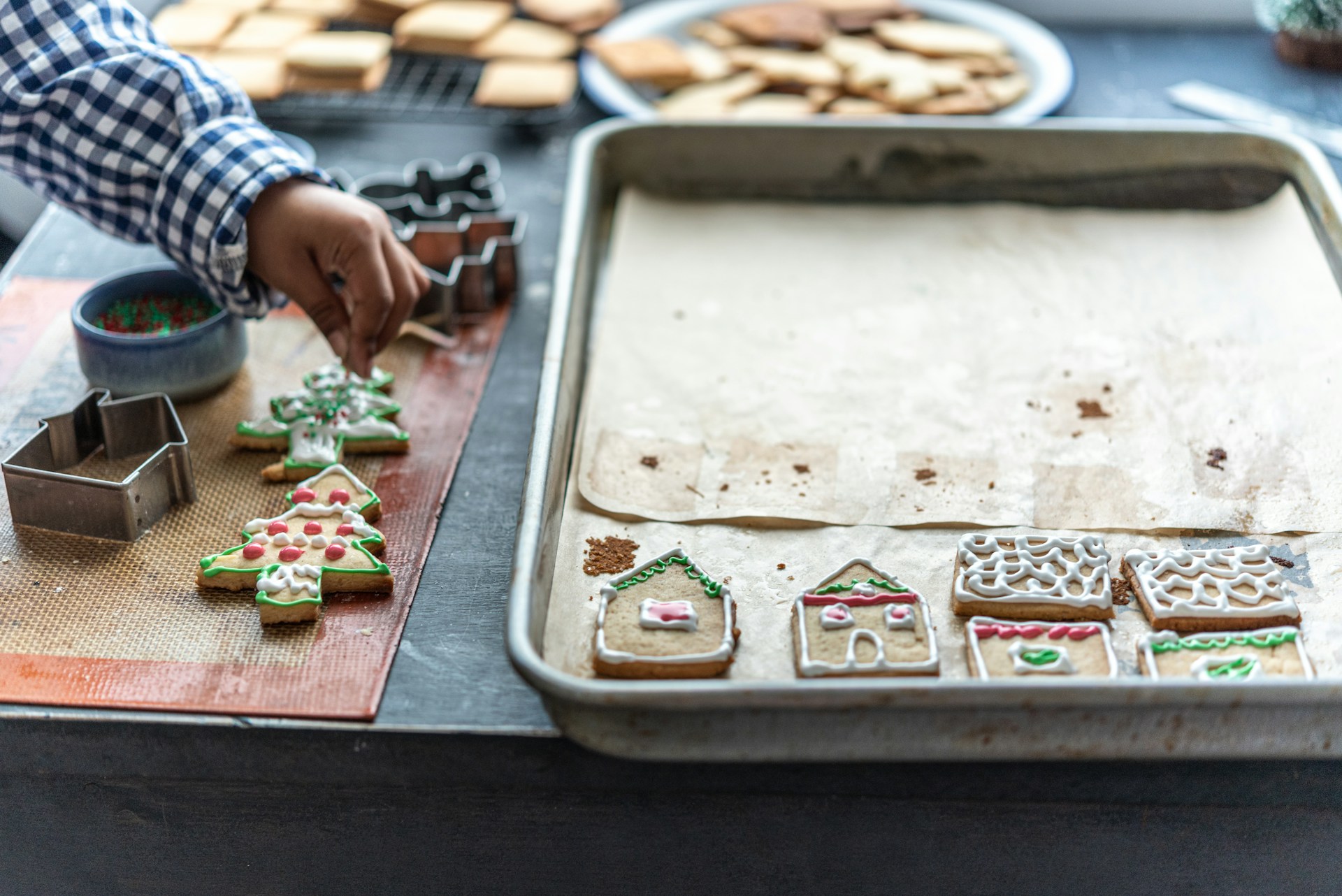A French Christmas
By Scarlet Charles
Christmas back home in France was always about food, drink, and the friends and family who’d join us.
There, Christmas starts on the 24th, mostly because of religious reasons. France, despite being a secular country, has a history of Catholicism, and celebrates a midnight mass on the 24th and another mass on Christmas morning. Very few people actually attend these, but the tradition remains that part of the Christmas meal is served on the 24th.
On Christmas Eve, we’d always eat a seafood platter, filled with shrimps and oysters, lobster and crab, followed by biscuits and wine.
Whereas, on Christmas Day, we would always be served a four-course meal. A starter of foie gras or smoked salmon, then a main course with either Turkey or Capon, stuffed with chestnuts and served with seasonal vegetables like sprouts, potatoes or carrots. It’d be then followed by a mandatory cheese course, and finally ended with dessert: a chocolate log, or ÔÇÿb├╗che de no├½l’.
Overall, there’s not much of a difference between a French and British Christmas. Aside from mince pies, eggnog or Christmas pudding, which all seem completely alien to a French person!
A Russian Christmas
By Daria Nekrasova
Most Russians follow the Eastern Orthodox Church which means that Christmas there is on the 7th of January. Christmas is more of a religious holiday rather than a family event. Russians tend to party and meet with family for New Years Eve and Day, leaving Christmas as a day to feed the soul and connect with their church.
The Christmas Eve supper, also known as sochevnik, is typically meatless as a fast before Christmas is observed. The main part of the meal is sochivo. This is a sticky pudding made from all kinds of nuts, legumes and sweeteners. It symbolizes unity. If thrown up to the ceiling, and it sticks, there will be a good harvest next year. Classic aspects of any Russian table include pickled vegetables, soups and dumplings. A main component of any Russian event is a salad. A vinaigrette is a salad made of finely chopped vegetables.
For drinks, alcohol is not allowed during the fasting period, so the drink of choice is vzar. This is a drink made out of different fruits. Overall, the Russian Christmas table includes a lot of vegetables and rarely any meat, especially if the family practices fasting.
A Chinese Christmas
By Emilli Li
Although Christmas is not a traditional festival in China, it has become more and more popular, especially for young people in big cities. Nowadays, it not only becomes a big celebration for young people but also is a romantic event for lovers. It is more commercial in China compared with western countries, most Chinese people take Christmas as a shopping or dating festival.
An indispensable part of Chinese Christmas is an apple wrapped in beautiful cellophane. It is the most common and popular Christmas gift in China. Usually, people will give it to their lover, friends, and parents on Christmas Eve. That’s because “apple” has a similar sound to the translation of “Christmas Eve” in Mandarin, therefore, the apple has become a symbol of Christmas Eve. It means to “wish you peace, health, happiness”. Sometimes, under the witness of the brightly decorated Christmas tree, lovers hide a ring within the apple and propose to their loved ones, a very romantic plan. Therefore, Christmas is also a festival for lovers.
Different from Westerners, Christmas is a big celebration for Chinese young people. They are more likely to shop or watch movies with friends rather than family members and then hold a party all night long. Having a fancy dinner is also a common way to celebrate different festivals and events in China, therefore, some people also prefer to have dinner with a few close friends or just with their partners.
A German Christmas
By Ella Harper
From turkey to pigs in blankets and mince pies to Christmas pudding, traditional British Christmas cuisine has something for everyone to indulge in and this is no different in Germany.
While what you eat may vary slightly depending on what region you live in, the one thing that is universal within the country is that most of the celebrating, (and eating), takes place on Christmas Eve. Although the ways in which German’s celebrate the holiday have become increasingly diverse, attending mass on Christmas Eve was/is tradition for the country’s Catholic population.
Many Catholics do not eat meat before attending church, therefore fish such as hake herring, carp and salmon are very popular, and this tradition has persisted even for less religious people. Alternatively, turkey and goose have become increasingly popular, as well as Bratwurst, a traditional German sausage. Serviettenkn├Âdel (German dumplings), red cabbage and sauerkraut also usually make an appearance in the feast.
For dessert, German style Christmas cookies known as Weihnachtsplätzchen are very popular, as well as Stollen, a type of fruit cake. Germany also has its own version of mulled wine, Glühwein, which can be found almost everywhere from as early as November. German Christmas food sounds delicious to me!
A Chinese Christmas
By Ouffy Ourufei
In China we have a saying that there is no feast without chicken. Almost every festival, chicken is the main dish of our tables, especially in lunar Chinese New Year.
White cut chicken is the most traditional dish of chicken in Guangdong China (a southern province of China). If you have been to Hongkong, you may have seen this before.
For its preparation, we put the chicken into hot boiled water for 30 minutes without turning on the heat. The chicken’s skin will remain nearly white in colour, and the meat will be quite tender and juicy. We cut the chicken into pieces with skin and bones when it is cooled.
The chicken is served with Cantonese Mashed Ginger, which is made by combining finely minced ginger, finely minced garlic, green onion, salt and hot oil.



